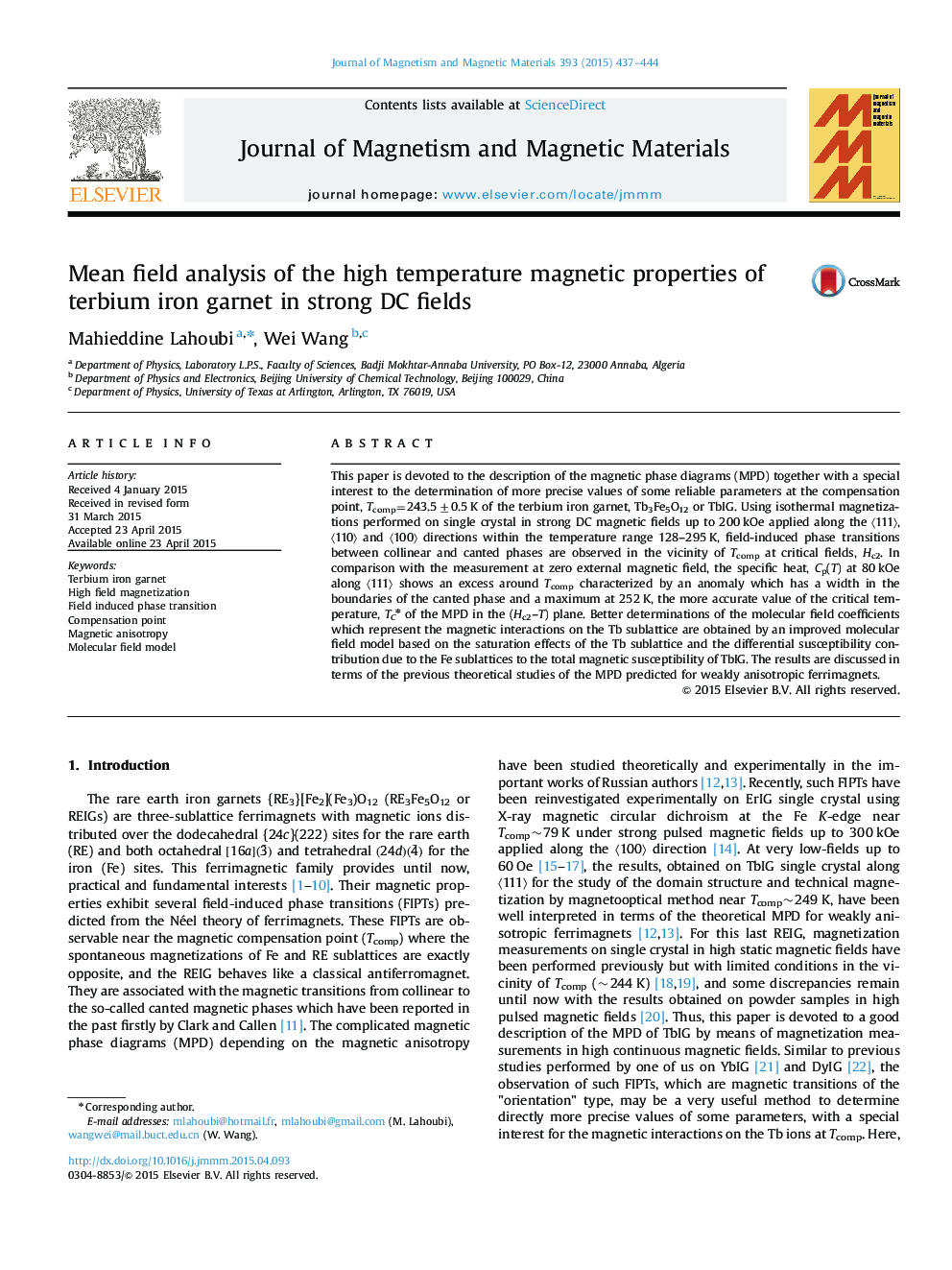| Article ID | Journal | Published Year | Pages | File Type |
|---|---|---|---|---|
| 1798674 | Journal of Magnetism and Magnetic Materials | 2015 | 8 Pages |
•High-T magnetizations are made on single crystal of TbIG in strong DC magnetic fields.•FIPTs are observed in the vicinity of Tcomp=243.5 K at critical fields, Hc2.•MPD are determined in the (Hc2–T ) plane for H along the main crystallographic directions.•The critical temperature TC⁎ is well estimated by the Cp(T ) data at Hex=80 kOe along 〈111〉.•The results are analyzed using a high-field method and a mean field model.
This paper is devoted to the description of the magnetic phase diagrams (MPD) together with a special interest to the determination of more precise values of some reliable parameters at the compensation point, Tcomp=243.5±0.5 K of the terbium iron garnet, Tb3Fe5O12 or TbIG. Using isothermal magnetizations performed on single crystal in strong DC magnetic fields up to 200 kOe applied along the 〈111〉, 〈110〉 and 〈100〉 directions within the temperature range 128–295 K, field-induced phase transitions between collinear and canted phases are observed in the vicinity of Tcomp at critical fields, Hc2. In comparison with the measurement at zero external magnetic field, the specific heat, Cp(T) at 80 kOe along 〈111〉 shows an excess around Tcomp characterized by an anomaly which has a width in the boundaries of the canted phase and a maximum at 252 K, the more accurate value of the critical temperature, TC⁎ of the MPD in the (Hc2–T) plane. Better determinations of the molecular field coefficients which represent the magnetic interactions on the Tb sublattice are obtained by an improved molecular field model based on the saturation effects of the Tb sublattice and the differential susceptibility contribution due to the Fe sublattices to the total magnetic susceptibility of TbIG. The results are discussed in terms of the previous theoretical studies of the MPD predicted for weakly anisotropic ferrimagnets.
